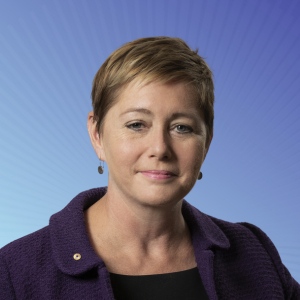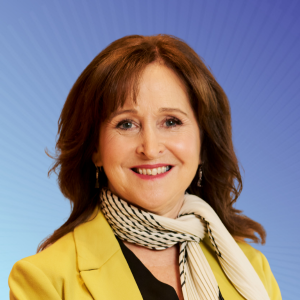2 June 2016
Reduced cost of living for retirees: ASFA Retirement Standard March quarter
There was a slight reduction in the cost of living for retirees in the March quarter, with a substantial fall in petrol prices offsetting an increase in the cost of pharmaceuticals, health and medical services, according to the Association of Superannuation Funds of Australia (ASFA) Retirement Standard.
The new figures illustrate that couples living a comfortable retirement, aged around 65, need to spend $58,922 per year and singles $42,893, down 0.5 and 0.7 per cent respectively on the previous quarter. Total retirement budgets for older retirees decreased by 0.2 per cent at the comfortable level, and 0.1 per cent at the modest level.
“The small decline in the cost of living in retirement is welcome news for retirees, but many people will still find it difficult to achieve a comfortable standard of living,” says chief executive officer, ASFA, Pauline Vamos.
In order to achieve a comfortable standard of living in retirement, an individual requires a minimum balance of around $545,000 and a couple around $640,000. Currently, less than 20 per cent of single people and 30 per cent of couples (aged over 65) are able to reach this standard of living.
“ASFA advocates a goal of at least 50 per cent of retirees living at the comfortable standard by 2050. Unfortunately, saving an adequate amount for retirement is anticipated to get harder, with a low interest rate environment and an aging population which will place more strain on governments as they seek to fund the increasing costs of health and aged care,” Ms Vamos said.
For the March quarter, the most significant price drops contributing to the decline in annual budgets were for automotive fuel (-10.0%), fruit (-11.1%) and holiday travel, particularly accommodation (-2.0%). The most noteworthy offsetting price rises were for medical and hospital services (+1.6%) and pharmaceutical products (+4.8%).
Falls in world oil prices continue to influence domestic fuel prices. During this quarter, automotive fuel prices fell in January (-5.5%) and February (-5.4%), though prices rose in March (+1.8%). Interestingly, over the past two years automotive fuel prices have fallen by 27 per cent.
Overall, food prices fell 0.2 per cent, the main contributor was fruit down (-11.1%), due to plentiful supplies of both year-round and summer fruit. This was partially offset by increases in prices for beef and veal (+3.5%) and vegetables (+1.5%).
Domestic holiday travel and accommodation prices decreased 1.9 per cent, as the effect of the peak domestic holiday period unwound. International holiday travel and accommodation prices fell 2.0 per cent, almost reversing the price increase in the previous quarter.
Clothing and footwear prices fell 2.6 per cent in the quarter, reflecting discounting during the post-Christmas sales. The main contributor to the drop was accessories prices, down 4.3 per cent.
The price rises for both medical and hospital services and pharmaceutical products reflect the annual cycles for the Medicare Benefits Scheme and Pharmaceutical Benefits Scheme (PBS). The safety net threshold amount for both schemes were reset on 1 January 2016, so consumers resume paying the normal PBS co-payments until they again reach the safety net threshold. For pharmaceutical products, the March quarter rise also reflects annual co-payment indexation.
Insurance premiums continue to increase with a rise of 1.7 per cent in the quarter. Over the last 12 months, insurance premiums have increased by 5.2 per cent.
“In the lead up to the end of the financial year, we advise consumers to start thinking about what additional contributions they can make to boost their superannuation.
“The earlier you engage with and contribute to your superannuation, the easier it will be to reach a comfortable lifestyle in your post-work years as you will get greater benefits from compound interest,” Ms Vamos concluded.
Table 1: Budgets for various households and living standards for those aged around 65 (March quarter 2016, national)
| Modest lifestyle | Comfortable lifestyle | |||
|---|---|---|---|---|
| Single | Couple | Single | Couple | |
| Housing – ongoing only | $73.73 | $70.78 | $85.45 | $99.06 |
| Energy | $40.97 | $54.41 | $41.58 | $56.39 |
| Food | $77.27 | $160.07 | $110.39 | $198.71 |
| Clothing | $17.31 | $28.10 | $37.47 | $56.2 |
| Household goods and services | $27.10 | $36.74 | $76.22 | $89.28 |
| Health | $43.22 | $83.41 | $85.75 | $151.33 |
| Transport | $90.30 | $92.85 | $134.56 | $137.12 |
| Leisure | $75.09 | $111.87 | $227.54 | $311.82 |
| Communications | $8.61 | $15.07 | $23.65 | $30.11 |
| Total per week | $453.59 | $653.29 | $822.60 | $1,130.01 |
| Total per year | $23,651 | $34,064 | $42,893 | $58,922 |
The figures in each case assume that the retiree/s own their own home and relate to expenditure by the household. This can be greater than household income after income tax where there is a drawdown on capital over the period of retirement. Single calculations are based on female figures. All calculations are weekly, unless otherwise stated.
Table 2: Budgets for various households and living standards for those aged around 85 (March quarter 2016, national)
| Modest lifestyle | Comfortable lifestyle | |||
|---|---|---|---|---|
| Single | Couple | Single | Couple | |
| Housing – ongoing only | $73.73 | $70.78 | $85.45 | $99.06 |
| Energy | $40.97 | $54.41 | $41.58 | $56.39 |
| Food | $77.27 | $160.07 | $110.39 | $198.71 |
| Clothing | $17.31 | $28.10 | $37.47 | $56.2 |
| Household goods and services | $47.57 | $67.43 | $147.87 | $171.16 |
| Health | $93.35 | $144.92 | $127.84 | $203.95 |
| Transport | $37.57 | $46.96 | $42.26 | $51.65 |
| Leisure | $47.84 | $71.37 | $123.65 | $170.92 |
| Communications | $8.56 | $14.98 | $23.52 | $329.93 |
| Total per week | $444.16 | $659.02 | $740.03 | $1,037.96 |
| Total per year | $23,160 | $34,363 | $38,587 | $54,122 |
The figures in each case assume that the retiree/s own their own home and relate to expenditure by the household. This can be greater than household income after income tax where there is a drawdown on capital over the period of retirement. Single calculations are based on female figures. All calculations are weekly, unless otherwise stated.
ASFA Retirement Standard
Costs and summary figures can be accessed via the ASFA website. The ASFA Retirement Standard Calculator can be used to obtain a breakdown of the Retirement Standard budgets for each state. Australians can find out more about superannuation on the independent Super Guru website.
ASFA is the peak policy, research and advocacy body for Australia’s superannuation industry. It is a not-for-profit, sector-neutral, and non-party political national organisation, which aims to advance effective retirement outcomes for members of funds through research, advocacy and the development of policy and industry best practice.
































